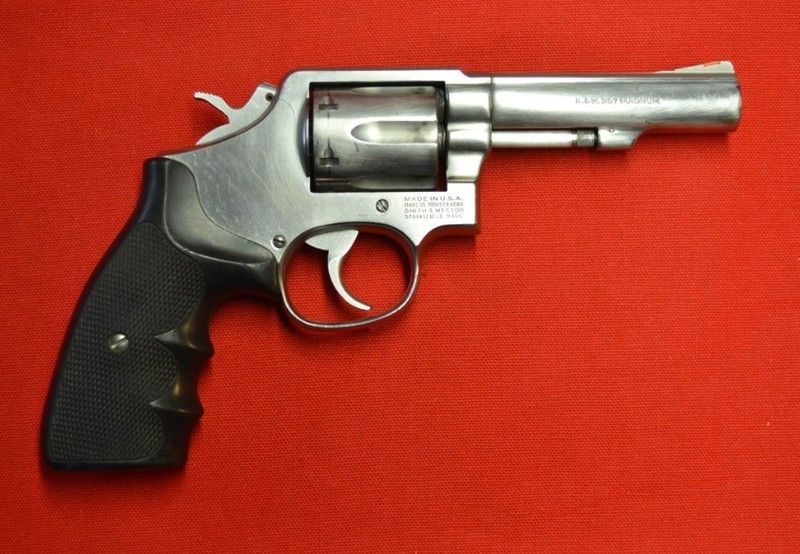lideally
What size bullseye would that be, i.e. how far from dead center is "six o'clock"?
I used the 25 yard sort. I'm sure the 50 foot size will suffice. A six o'clock hold is on the bottom of the bullseye. The bullets will then ideally hit center. This is with 158 grain loads. Lighter, faster bullets have less dwell time in the bore and will hit lower, as the barrel has less time to rise in recoil. You will want to get some life-size targets of snakes, deer, humans, etc. for practice on animals, once you know where the gun and load are shooting. Try squirrel and rabbit targets as far out as you think you can make clean kills in the field.
I have found Ruger and S&W fixed sights to be pretty close to "on" most of the time. Colts are notorious for needing to have the barrel turned slightly by a gunsmith who actually is worthy of the name. That said, I have fired a SAA .45 and a New Service .45 Colt at 25 yards with excellent results. The NS with a 5.5-inch barrel was dead center at that range and shot groups as tight as my S&W M-29, which was a real tack-driver. I suspect that a prior owner had had the Colt adjusted, but have no way to know. Ammo was Remington 250 grain factory stuff.
One time when I was a USAF cop, I drew a Colt Official Police on the range. The sights were so far off that I had to negotiate with the Rangemaster and get a S&W Victory Model to complete my qualification. I managed to salvage the day, but only shot a Marksman score. Had I not been using that Colt at first, I think I'd have made Expert.
Col. Chas. Askins told me that when he was chief marksmanship instructor for the USBP, he ordered a bunch of Colt NS .38 Specials. He had to turn the barrels on almost all to get the sights dead on before issuing the guns. I asked why he didn't just order S&W .38-44 Heavy Duty guns. He said candidly that he got on well with the Colt reps, but considered the S&W people to be elitist snobs. Prices should have been similar, especially on a large government order.
If you want more from me on fixed sights, please put a quarter in the slot.




